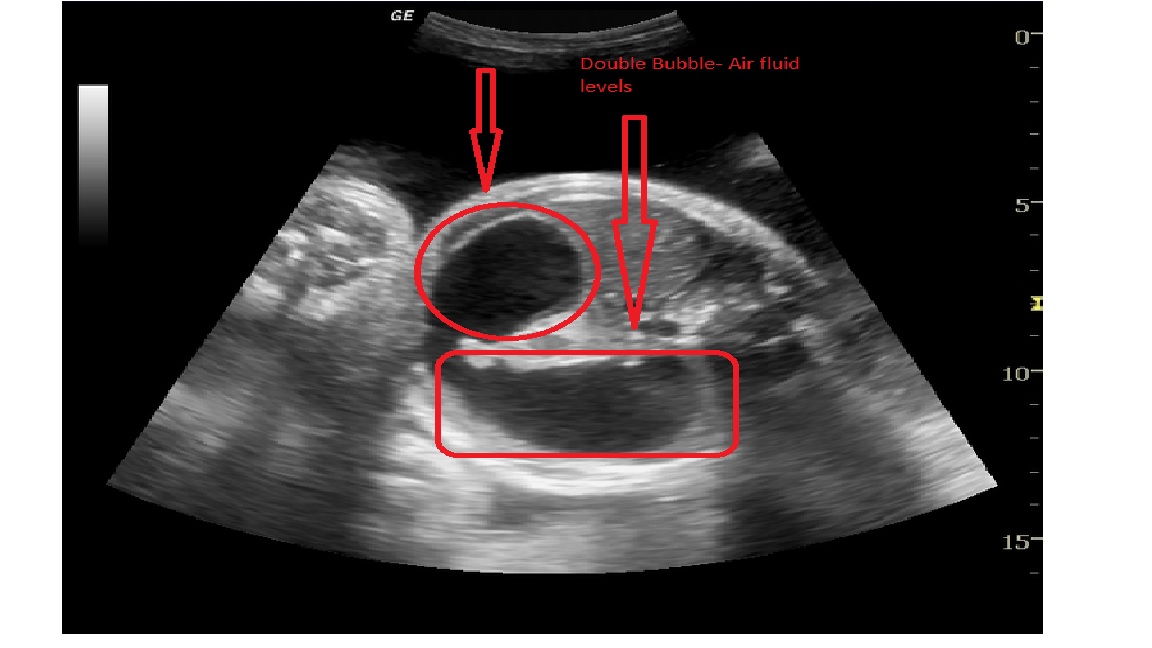Duodenal atresia echocardiography and ultrasound
|
Duodenal Atresia Microchapters |
|
Diagnosis |
|---|
|
Treatment |
|
Case Studies |
|
Duodenal atresia echocardiography and ultrasound On the Web |
|
American Roentgen Ray Society Images of Duodenal atresia echocardiography and ultrasound |
|
Duodenal atresia echocardiography and ultrasound in the news |
|
Risk calculators and risk factors for Duodenal atresia echocardiography and ultrasound |
Editor-In-Chief: C. Michael Gibson, M.S., M.D. [1]; Associate Editor(s)-in-Chief: Hamid Qazi, MD, BSc [2]
Overview
Ultrasound may be helpful in the diagnosis of duodenal atresia. Findings on ultrasound suggestive of duodenal atresia include polyhydramnios in pregnancy, and air fluid levels in the stomach with absent gas in the distal colon. Echocardiography can be performed to check for cardiac defect in infants with associated down syndrome.
Echocardiography/Ultrasound
Ultrasound findings are as follows:[1][2]
- Echocardiography can be performed to check for cardiac defect in infants with associated down syndrome.
- Abdominal ultrasound may be helpful in the diagnosis of duodenal atresia.
- Findings on an abdominal ultrasound suggestive of duodenal atresia include:
- Air fluid levels with absent gas in the distal colon.
- Polyhydramnios on prenatal ultrasound.
- Findings on an abdominal ultrasound suggestive of duodenal atresia include:
- Renal ultrasound can be performed if renal anomalies are suspected.

References
- ↑ Adams, Stephen D.; Stanton, Michael P. (2014). "Malrotation and intestinal atresias". Early Human Development. 90 (12): 921–925. doi:10.1016/j.earlhumdev.2014.09.017. ISSN 0378-3782.
- ↑ Morris, Grant; Kennedy, Alfred; Cochran, William (2016). "Small Bowel Congenital Anomalies: a Review and Update". Current Gastroenterology Reports. 18 (4). doi:10.1007/s11894-016-0490-4. ISSN 1522-8037.